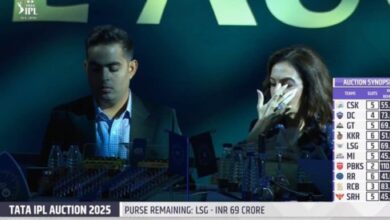Revisiting Manmarziyaan: Anurag Kashyap’s tale of messy romance is as real as it gets

Recently, when actor Taapsee Pannu and director Anurag Kashyap received compliments for their 2018 film Manmarziyaan, Taapsee had an incredulous response. She told India Today, “This entire fan club for Manmarziyaan, I want to ask them why didn’t they come to the theatres, the world would have been different for us.” Anurag added, “My film is always a blockbuster after four years.”
They aren’t wrong. Manmarizyaan, the romantic drama featuring Taapsee, Abhishek Bachchan and Vicky Kaushal, received rather polarised reactions when it released in 2018; not the Gehraiyaan level of divisiveness, but close enough. Anurag Kashyap had directed unusual romantic films before, but there was something dressingly real about Manmarziyaan, and how it highlighted a woman’s battles with herself and society. It was almost frustrating to watch perhaps — because on the surface, she couldn’t decide what she really wanted. This is a rather uncomfortably real feeling for most of us. At the time, the consensus was that you can either love Manmarziyaan or be bored to tears it. Some noted it as the modern Hum Dil De Chuke Sanam, which isn’t entirely wrong either, as the basic plotline is similar
But unlike Sanjay Leela Bhansali’s flamboyant blockbuster, whose drama was set inside glamorous Rajasthan forts, Anurag Kashyap’s film was based in the heart of Amritsar. Taapsee’s Rumi was a modernised Nandini, a sexually liberated woman, juggling love and lust, while remaining torn between the two men in her life. Delving into the ideas of lust in a 90’s film was rather unheard of, as the audience would rather watch the growing pains of the characters.
Unlike Taapsee’s flustered Rumi, Aishwarya Rai’s Nandini slowly moved on from Salman Khan’s boerous Sameer to her ideal husband, Vanraj (Ajay Devgn). The lines are clearly drawn in Bhansali’s film between the one ‘who taught her how to love’ and the one who taught her how to fulfill it. Nandini complied with her parent’s orders to marry a complete stranger, and her rebellion emerged in bursts such as downing chillies and glaring at hapless Vanraj in Italy, even though he had taken her there to unite her with Sameer. But this was the 90s, an era in Bollywood in which love and romance wasn’t intended to be complicated or messy.
In Manmarziyaan, Rumi marries Robbie (Abhishek) on a whim, but remains unsure about her decision. Is she in love with the earnest Rob, or does she still have feelings for Vicky’s DJ Sandzz, a man every mother would want to warn their daughters about. He is a complete red flag, but Rumi still wants him, or so she believes. Rob is her side through it all, but finally, he is also pushed to a breaking point because of her indecision. Manmarziyaan sought to pry into the bittersweet emotions between love, attraction and growing friendship. None of the characters were perfect or saintly, though Abhishek’s Rob came close. They were human and raw with rather relatable feelings. The film suggested that the cinematic age of instant unconditional love packed with song and dance might have ended, and that onscreen romance should be as knotted as it is in real life. It was meant to be frustrating in a way, and tear down the ideas of quintessential Bollywood romance, while showing the various nuances of love — the rebellious angst, the fear of falling into love too deeply, the preoccupation with lust that drives out rationality.
It’s a pity that Manmarziyaan didn’t get more appreciation at the time of its release. It is still one of the most realic films about romance in recent times, minus the interpretive dance inserts.







